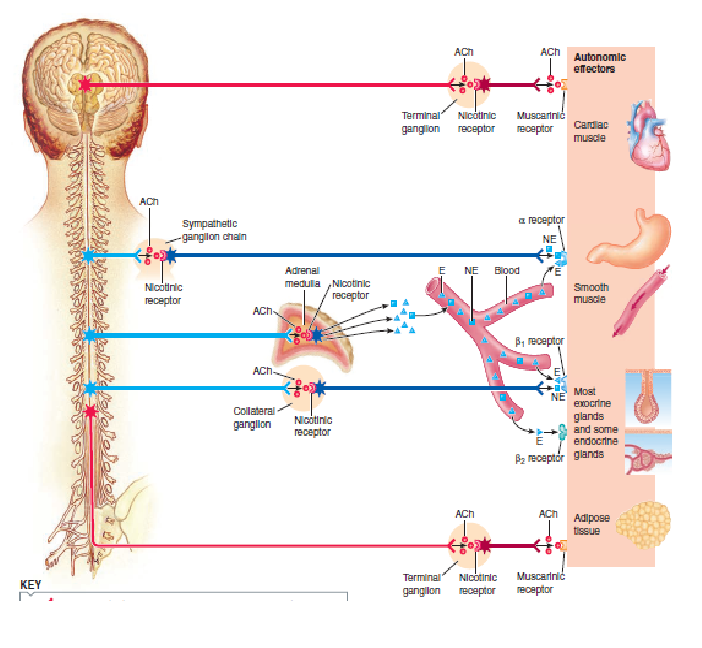
The Autonomic Nervous System and the Adrenal Medulla
The nervous system, along with the other major regulatory system, the endocrine system, controls most muscle contractions and gland secretions. Whereas the afferent division of the PNS detects and carries information to the CNS for processing and decision making, the efferent division of the PNS carries directives from the CNS to the effector organs (muscles and glands), which carry out the intended response. Much of this efferent output is directed toward maintaining homeostasis.
The autonomic nervous system, which is the efferent branch that innervates smooth muscle, cardiac muscle, and glands, plays a major role in the following homeostatic activities, among others: ■ Regulating blood pressure ■ Controlling digestive juice secretion and digestive tract contractions that mix ingested food with the digestive juices ■ Controlling sweating to help maintain body temperature.
Stimulation of the sympathetic nerves to the adrenal medullae causes large quantities of epinephrine and norepinephrine to be released into the circulating blood, and these two hormones in turn are carried in the blood to all tissues of the body to exert sympatomimetic effects.
At the end of lesson,students will be able to learn about;
1. Anatomy and Neurotransmitters of Autonomic Fibers
2. Dominance Patterns of Sympathetic and Parasympathetics Systems
3. Autonomic Receptor Types
4. CNS Control of Autonomic Activity
5. Motor Neuraons
6. Influence of Specif Chemical Agents and Diseases


